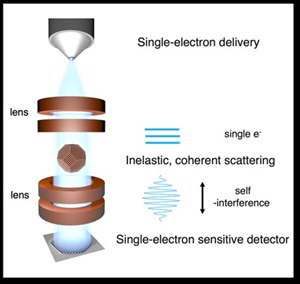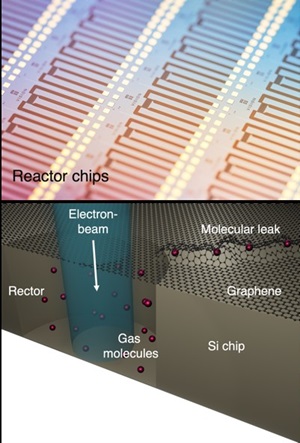2022
The Center for Visualizing Catalytic Processes (VISION) continued to establish its investigations into the way individual nanoparticles catalyze chemical reactions of relevance for the green transition. Notable scientific highlights in 2022 include the following:
A scientific achievement is the conceptualization of the single-electron-mode in VISION's visualization of nanoparticles using electron microscopy. In this mode, electrons pass through the microscope one-at-a-time and are detected individually. The low electron rate is essential to sup-press any potentially invasive effect of the electron beam on the nanoparticles and catalytic processes. In fact, in collaboration with international partners, it was discovered that the single-electron-mode deviates from the common view of the electron beam as continuous. Clearly, quantum effects are at play in electron microscopy, such as the electron's self-interference during interaction with matter and a continuous transition from wave to particle nature of individually detected electrons.
 |
Figure 1. Illustration of the single-electron-mode for electron microscopy: Single successive electrons interact with the sample through inelastic, coherent scatter-ing, subsequently self-interfere, and finally project on the single-electron counting detector. Kisielowski et al Nanomaterials 13, 971 (2023). |
Another highlight concerns VISION's microfabricated reactors for simultaneous measurements of individual nanoparticles' atomic structure and catalytic properties. These measurements are enabled by implementing thin electron-transparent membranes on the reactors. VISION has worked especially with the ultimate thinnest membrane, graphene, because it affects the measurements the least. But whereas graphene is impermeable to molecules, the seals at the graphene periphery are not. VISION has developed highly sensitive measurements for determining the kinetics of corresponding molecular leaks. This insight has devised a new method for tailoring hermetically sealed seals, which is essential for VISION's research into thermal catalytic processes in the gas phase and electrocatalytic processes in the liquid phase.
 |
Figure 2. Image of VISIONs reactor chips and an illustration of a graphene-sealed cavity reactor with a penetrating electron beam. Ambjørner et al, submit-ted (2023). |